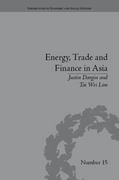Question
1. Consider a world composed of two countries, Spain and Germany. The firms in both countries produce textile products (T) and cars (C) with the
1. Consider a world composed of two countries, Spain and Germany. The firms in both countries produce textile products (T) and cars (C) with the only help of labour. Workers are perfectly mobile across sectors and immobile across countries. The production function is linear in both sectors. The table above indicates the required labor input - measured in hours - to produce one unit of the good in each sector. In other words, output in sector i in country j can be expressed as Y j i = L j i /j i where L j i denotes the labor input and j i the labor input needed to produce one unit of good i in country j.
a. Describe the pattern of absolute and comparative cost advantages.
b. Derive the expressions for the production possibility frontiers of both countries assuming a population size of 1,000 workers in Germany and 500 workers in Spain.
c. Demonstrate the existence of potential gains from international trade. Define the relative price of cars at which all benefits from trade accrue to German firms and workers.
d. How do your results change if there is no labor mobility between sectors because the skills of workers are sector-specific?
Step by Step Solution
There are 3 Steps involved in it
Step: 1

Get Instant Access to Expert-Tailored Solutions
See step-by-step solutions with expert insights and AI powered tools for academic success
Step: 2

Step: 3

Ace Your Homework with AI
Get the answers you need in no time with our AI-driven, step-by-step assistance
Get Started


